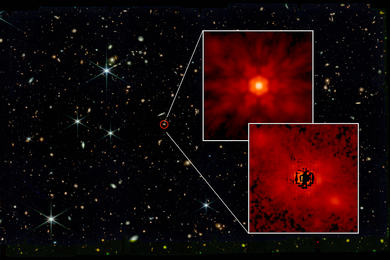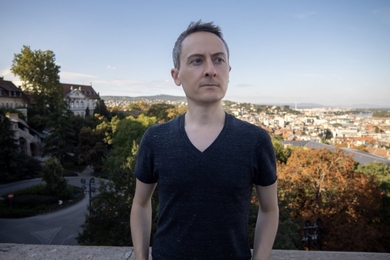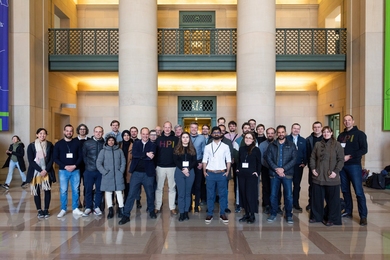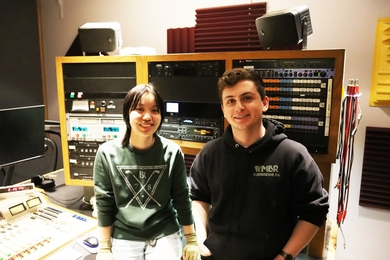In 1953, a young man named Henry Molaison underwent an experimental operation that doctors hoped would control his frequent epileptic seizures. When the surgeon could not locate the origin of Molaison’s seizures, he removed a structure known as the hippocampus from both sides of his brain.
Soon after the surgery, Molaison’s doctors realized that the procedure had had a dramatic and unintended consequence: Molaison could no longer form new memories. This tragic loss for Molaison and his family turned him into one of the most important patients in the history of neuroscience. In fact, his case answered more questions about how memory works than the entire previous century of research, writes Suzanne Corkin, MIT professor of neuroscience emerita, in her new book, “Permanent Present Tense.”
“He was a hero,” says Corkin, who devoted much of her career to studying the patient who became world-famous as “H.M.” “He was someone who had something really awful happen to him, and in spite of this, he made a huge contribution.”
In her book, Corkin hopes to shed light on the life of the person behind the scientific studies. “I don’t want people to think of him as just a lesion and a bunch of test scores. He was a real person,” she says. “He had a sense of self, he had values, and he had a wonderful sense of humor.”
Molaison was also aware that he was helping scientists, and was eager to participate in their studies, Corkin says. In a 1992 radio interview, she asked Molaison what he was going to do the next day. “Whatever is beneficial,” he replied.
Breaking down memory
Corkin and Molaison first met in 1962, while Corkin was a graduate student in Brenda Milner’s lab at McGill University. Milner had done the first cognitive evaluation of Molaison in 1955, two years after his operation. Hans-Lukas Teuber recruited Corkin to MIT in 1964, and she set about establishing the behavioral neuroscience laboratory at the MIT Clinical Research Center (CRC). Molaison visited this facility dozens of times to participate in studies designed to probe the mechanisms of human memory.
Milner’s initial studies with Molaison supported the hypothesis that long- and short-term memory recruit different brain processes and regions. His short-term memory was intact: If a researcher read him a string of digits, he could recite it back immediately. As the delay between hearing the numbers and repeating them back increased, however, his performance declined markedly, helping scientists to determine the limits of short-term memory.
Studies with Molaison also helped scientists clarify the distinction between two types of long-term memory now known as declarative and nondeclarative. Declarative memory, also termed explicit memory, refers to conscious memory for facts and specific experiences. Nondeclarative memory, also called procedural or implicit memory, includes skills such as learning to ride a bicycle or play tennis.
When asked to trace the outline of a star by looking at his hand, the pen and the star only as a reflection in a mirror, a task commonly used to evaluate the ability to learn new motor skills, Molaison did gradually improve. Each time he performed the task, however, he had no recollection of having done it before. This revealed that Molaison’s nondeclarative memory was still intact, even though he lacked the declarative knowledge of having learned something new.
To Corkin’s great surprise, Molaison was also able to draw, in 1966, the floor plan of the house where he was living at the time, where he had moved after his operation. “He had no business knowing anything about the house, but over several years he had built up a representation of the floor plan,” Corkin says. She believes that brain areas such as the cortex and memory structures located near the hippocampus could still perform some memory functions and gradually absorbed knowledge of the house’s layout.
These findings and other studies suggest that there are many aspects of memory distributed throughout the brain, and that Molaison was able to tap into some of those areas that were still intact.
Part of the family
Despite Molaison’s amnesia, he did seem to know something about what had happened to him, Corkin says. “He knew he had epilepsy, he knew he had an operation, and he knew he had a memory impairment,” she says. “He also had a vague sense that the operation had been done only a few times before, and that when it was done with him something went wrong.”
After his operation, Molaison lost access to specific events from his childhood, although he remembered the gist of his early experiences. He was able to recognize family members and celebrities whom he had known or heard of before 1953.
Over the decades that Corkin knew Molaison, he became much more than a research subject, she says. “He was part of our lab family,” she says. “We celebrated his 60th birthday at the CRC. We would send him gifts at Christmastime or other times. If we knew he needed something we’d send it. He loved Westerns, so we sent him a bunch of those, we sent him the equipment to play movies on.”
Molaison eventually started to believe that he knew Corkin, but thought that she had been a high school classmate. He also got used to seeing the nurses and other patients in the nursing home where he spent the last 28 years of his life, though he didn’t remember any of their names.
In 1992, Molaison donated his brain to MIT and Massachusetts General Hospital for scientific study after his death. After he died, on Dec. 2, 2008, at the age of 82, his brain was scanned both at Mass General and at the University of California at San Diego. One year after that, researchers cut his brain into 2,401 slices, each as thin as a human hair, to create a digital map of it. A live stream of the two-day process was viewed more than 3 million times.
“He is so much more famous than all of the scientists who studied him put together,” Corkin says. “He revolutionized the science of memory. We look at memory now in a totally different way than people did before H.M.”
MIT neuroscientist Suzanne Corkin shares her memories of the world’s most famous amnesia patient.
Publication Date:

Caption:
Henry Molaison in 1953

Caption:
Henry Molaison at age 60
Credits:
Photo: Suzanne Corkin






